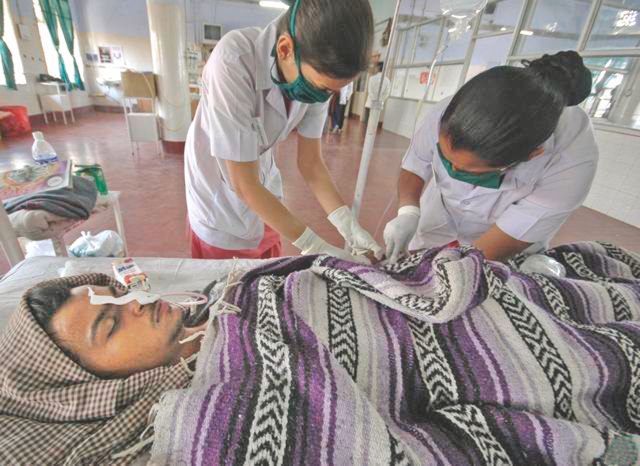News >> Health
Controlling infections in hospitals
 22 Apr, 2013
22 Apr, 2013
Hospital is a place for eliminating infections. It can also be a place for contacting infections. Any infection that is being acquired in a hospital is known as Hospital Acquired Infection (HAI) or Nosocomial infections. It is a serious cause for concern in a developing country like Bangladesh.
HAI is the cause of extended hospital stay and increased use of antibiotics at a cost of millions of extra bucks. However, we can reduce HAI by implementing policies, surveillance programmes and procedures that aid in breaking the chain of infections.
Infection may spread from direct contact — patient to patient, hospital stuff to patients, especially transferred through hands. It also may occur through different invasive procedure and from bedding, clothing, toys, handkerchiefs, food, water etc. Another method of transmission is through droplet spread through sneezing, coughing, singing etc.
Most of the public hospitals in countries like Bangladesh are over-flooded with patients — patients on bed, on floor and too many attendants roaming in the hospital wards. Thus, it is very difficult and challenging to maintain the atmosphere what a standard hospital should have.
In spite of these practical problems, we can take some simple and sustainable measures to minimise contacting infections at hospitals. Following measures may help reduce HAI.
1. Ensuring proper hand washing: It is the single most important step in the fight against infection prevention.
2. Control of attendants: Limiting the number of attendant and strictly maintain hospital visiting time.
3. Maintenance of personal hygiene by healthcare professionals.
4. Rational use of antibiotics.
5. Reducing hospital stay.
6. Cleaning the hospital round the clock.
7. Use of personal protective equipments, such as mask, gloves, gowns etc.
8. Proper sterilisation of equipment.
9. Ensuring available and recommended vaccine for all.
10. Continuous surveillance.
11. Continuous education on infection control for doctors, nurses, cleaners, technologists and other support staffs.
Educating healthcare personnel as well as enforcing strict guidelines to decontamination and sterilisation are mandatory solution to a problem that will otherwise continue to get worse over time. We all should try to minimise hospital infections for the betterment of the patients as well as care-givers.
The writer is Professor of Pediatrics and Director of Hospital, Community Based Medical
College Hospital, Mymensingh.
Source: Daliy star

